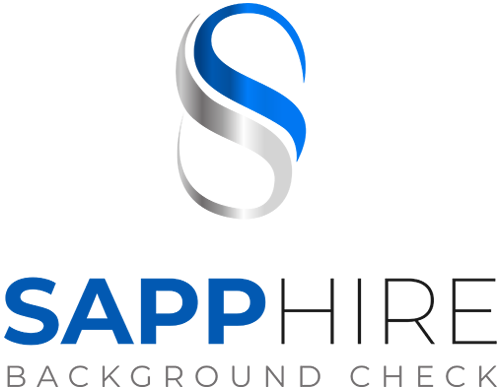Do Background Checks Show Out of State Records? Find Out
- August 13, 2025
- Posted by: SappHire Check
- Category: background check tips

Out-of-state coverage starts with a national search and an address history, then moves to local confirmation. You verify leads with county research and add state checks or federal court searches when the role requires it. The aim is accurate results tied to the right person, delivered in a way that fits your policy. Use these steps to build a repeatable process for multi-state hiring.
This complete guide answers the question of whether background checks show out-of-state records and explains what employers can expect. The short answer is that a single local search will not reach other states, while a broader plan can surface records across state lines.
Why Background Checks Matter
Background checks help employers make safer, smarter hiring decisions. They verify identity, credentials, and work history to confirm a candidate’s claims. They also flag relevant criminal records so teams, customers, and company assets stay protected.
Screening also supports compliance and consistency. A defined process helps companies follow federal laws and local regulations, including industry-specific rules. Proper documentation reduces hiring risk, shows due diligence, and creates a clear record of decisions.
What Each Background Check Covers
Each screening pulls from specific record sources and serves distinct hiring needs. Use the summaries below to see what each check includes, what it can and cannot report, and when it’s most useful. Always obtain written consent and follow the FCRA and applicable state or local rules.
Criminal Background Check
Criminal background checks are screenings that search public record sources for reportable convictions and pending cases tied to a candidate. They typically include county and state court searches, a federal criminal search, and sex offender registry checks, with national databases used as leads. Employers use them to support workplace safety, reduce risk, and make informed hiring decisions.
Good practice requires consent and compliance with laws like the FCRA and relevant state or local rules. Database “hits” should be verified at the primary court to ensure accuracy and correct identity. Reports usually exclude sealed or expunged records and, in many jurisdictions, arrests that didn’t lead to a conviction.
State Criminal Background Check
A state criminal background check searches a state-level repository or statewide court index for reportable felony and misdemeanor records tied to a candidate’s identifiers (usually name and date of birth; some regulated roles use fingerprints). It aggregates cases filed across counties within that state, offering wider in-state coverage than a single county search. Turnaround is often fast, but results depend on how quickly counties feed the state system and how complete their data is.
Because some repositories are incomplete or delayed, possible matches should be verified at the primary county court before decisions are made. Employers should obtain written consent and follow the FCRA and any state or local rules on what can be reported or considered. Best practice is to pair a state search with county checks (based on address history) and, where appropriate, federal criminal and sex offender registry searches.
How to Reach Out of State Records
Start with a national background checks database search and an address history to spot prior locations in a different state. Use those locations to conduct additional searches through a county criminal search and a state criminal background check in the areas that matter.
Add a federal search when the role or facts point to federal jurisdiction or multi-state activity. Always verify any hits with a county search so you can confirm records, dispositions, and identity before using the result in the hiring process.
What Shows Up and What Laws May Limit Reporting
Background checks can return criminal records that include conviction details, court identifiers, and dates. Reports may show misdemeanor convictions like disorderly conduct as well as felony convictions, along with pending cases when allowed by law.
Some data types have limits under state laws and local laws. Examples include arrest records that did not lead to a conviction, juvenile records, dismissed records, diversion programs outcomes, and older marijuana possession matters in many states.
Lookback Rules and Seven-Year Guidance
Some locations use a seven-year lookback period for certain records in employment background checks. Other places allow reporting of convictions beyond seven years while still following federal laws and applicable laws that govern consent and disputes.
Salary thresholds and timing rules can change what a report can show in the following states and others. Since rules change, employers should review educational resources and confirm current state and local laws before relying on older guidance.
Turnaround Time and Verification
Turnaround time varies by court access and research method. County courts may require manual work that adds days, while state background checks and national databases can be faster when data is current at the local level.
Always verify any match with a county search before taking action. Verification confirms the records belong to the candidate and that the disposition is current, which reduces risk in the hiring process.
Compliance for Employers
According to the EEOC’s guidance, employers must give a stand-alone disclosure, obtain written consent, and follow adverse-action steps when using consumer reports.
This helps you run background checks without tripping over rules.
- Disclosure and consent: Give a stand-alone disclosure and get written consent before ordering employment background checks from a CRA.
- Adverse action: If the report impacts the hiring process, send pre-adverse and final letters, include the report, and explain dispute rights.
- EEOC guidance: Use fair hiring practices. Compare the candidate’s criminal history with job duties, time since the conviction, and rehabilitation.
- Ban-the-box / fair chance: Many jurisdictions restrict timing. Wait until a conditional job offer when rules apply.
- Local rules: Some cities and counties add extra steps. Track state and local laws wherever you hire.
Build a Screening Workflow
Create a simple workflow that starts with a national database search and address history. Use that map to run county background checks and state background checks in each relevant jurisdiction across state lines.
Add additional checks when the role involves higher risk or regulated work. Keep written criteria that link the candidate’s criminal history to job duties and document how each decision relates to the position.
State Differences that Affect Results
State laws and local regulations can impact the accessibility and accuracy of background checks.
- Repository access: Some states limit direct employer access; requests may route through individuals or specific agencies.
- Data freshness: Not all counties upload on the same cycle. A state background hit may still need a county confirmation.
- Use limits: Some places restrict arrest records, juvenile records, dismissed records, or low-level matters like marijuana possession.
- Timing rules: Some require checks only after a conditional job offer.
- Fees and ID: Vary by site; factor this into your turnaround time and budget.
Background Check Provider
Employment background checks will surface out-of-state results when you pair a national search with county background checks and confirm any criminal records locally. Keep timing aligned with fair chance rules and focus on criminal history that is job-related. Follow federal laws and any state or city rules that apply to the role.
Work with a reliable background check provider to build a plan that scales across locations. The provider can help you pick the right criminal background checks, manage disclosures, and verify results before action.
Conclusion
Out-of-state coverage does not come from a single local search, and you need a clear plan that starts with a national search and address history. Then move to county background checks and, when helpful, state criminal background checks in each location tied to the person. Follow federal and local rules, document each step, make county verification the default, and use a role-based matrix with staff training and a simple map of counties and states from the past seven to ten years to reduce risk and avoid incomplete data.
At Sapphire Check, we provide fast, secure, background screenings tailored to your needs. Our professional services help you protect your business, meet industry regulations, and stay ahead of risks. Contact us to learn more or request your first background check today.
FAQs
Do background checks show out-of-state records?
No, a single county or state check does not pull records from other states. Use a national search, then verify with county and state checks where the person lived or worked.
How do employers find criminal history in other states?
Run an SSN or address history to identify prior states, then order county criminal background checks and state criminal background checks in those locations; add a federal search if needed.
Do federal background checks include state criminal records?
No, a federal criminal search reports federal cases only. You still need county background checks and state checks to see state-level criminal records.
How far back do employment background checks go?
Many programs use a seven-year lookback for non-convictions under the FCRA, while conviction reporting varies by state and salary threshold. Always apply applicable state and local laws.
Are arrest records and dismissed records shown on background checks?
Often no; many states restrict arrest records without convictions, juvenile records, diversion programs, and dismissed records. Work with a background check provider to filter results correctly and follow fair chance practices.
